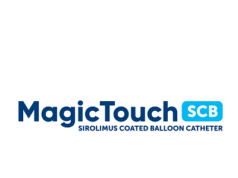 Biotronik has announced the enrolment of the first patient in the Leave Nothing Behind-trial, which aims to demonstrate the non-inferiority of drug-coated balloons (DCB) or DCBs in combination with resorbable magnesium scaffolds (RMS) compared to drug-eluting stents (DES) in chronic total occlusions (CTO) in percutaneous coronary interventions (PCI).
Biotronik has announced the enrolment of the first patient in the Leave Nothing Behind-trial, which aims to demonstrate the non-inferiority of drug-coated balloons (DCB) or DCBs in combination with resorbable magnesium scaffolds (RMS) compared to drug-eluting stents (DES) in chronic total occlusions (CTO) in percutaneous coronary interventions (PCI).
The first implantation was performed by Mohamed Ayoub at the Heart and Diabetes Center North Rhine-Westphalia in Bad Oeynhausen, Germany.
The prospective, single-center, single-blind, randomized trial evaluates the efficacy of the Pantera Lux DCB and Freesolve RMS compared to Orsiro Mission DES in 166 CTO patients.
“We want to investigate whether treatment with DCBs—used alone or with resorbable magnesium scaffolds as a bailout option—is non-inferior to drug-eluting stents in patients with chronic total occlusions,” summarised Ayoub, the principal investigator in the study. “If the study provides evidence in favour of this approach, patients with CTOs or complex lesions could be treated with DCBs or Freesolve RMS on a routine base with excellent results.”
The Leave Nothing Behind trial targets an angiographically well-defined group of patients with CTO and J-CTO [Multicenter CTO Registry of Japan] scores ranging from 0 to 3. Patients will be randomised in a 1:1 treatment allocation between DCB/DCB+RMS and DES. The primary endpoint is the average efficacy of the treatment approach at nine months post-implantation. Clinical endpoints, including major adverse cardiac events, at nine-month and three-year follow-ups constitute the secondary endpoint.
“We are excited to embark on this trial that represents a significant step forward in the quest to improve patient outcomes and quality of life”, said Georg Nollert, vice president medical affairs, Vascular Intervention at Biotronik. “While chronic total occlusions are constantly increasing, the use of advanced technologies like the Pantera Lux DCB and Freesolve RMS could pave the way for new standards in CTO treatment, by leaving nothing behind for future interventions.”










